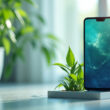Samsung has launched sales of refurbished versions of its flagship Galaxy S25 series smartphones in the U.S., offering buyers the Galaxy S25, Galaxy S25 Plus, and Galaxy S25 Ultra. Typically, the company begins selling refurbished flagship devices only after the launch of the next generation, but this time, it’s different: the Galaxy S26 will go on sale only in February 2026, while the refurbished Galaxy S25 is already available.

The prices for the refurbished devices are as follows: Galaxy S25 – from $709; Galaxy S25 Plus – from $900; Galaxy S25 Ultra – from $1109. This allows savings of up to $260 compared to buying a new smartphone. Additionally, Samsung has started selling refurbished Galaxy Z Fold 6 – from $1429 (a $370 discount compared to a new one). All refurbished smartphones undergo a complete inspection at Samsung service centers with 147 quality control checks. Each device receives a new original battery and a new IMEI number.
Industry Insights and Market Trends
The release of these refurbished models comes amidst a growing trend in the smartphone industry where consumers are increasingly opting for more sustainable and cost-effective choices. Recent statistics show a notable increase in the refurbishing market in the United States, driven by both environmental concerns and economic factors.
In comparison to competitors like Apple and Google, Samsung’s decision to release refurbished models ahead of new iterations demonstrates a keen understanding of market dynamics, appealing to consumers eager for premium devices at more accessible prices. Experts suggest that this strategy not only attracts cost-conscious buyers but also taps into a segment that values reduced electronic waste.
Technology Enhancements in Refurbished Devices
Samsung’s emphasis on quality is evident in their refurbishing process, where each phone, including the Galaxy Z Fold 6, gets a thorough makeover: new batteries enhance longevity, while updated software ensures optimal performance. These improvements ensure that refurbished phones perform almost as well as their new counterparts, bridging technology gaps with affordable options.
Consumer Impact and Future Developments
The early release of refurbished models could influence consumer choices significantly, offering competitive alternatives at a time when newer models are anticipated. This move may encourage other manufacturers to adopt similar strategies, potentially leading to a shift in how and when companies offer refurbished devices.
As Samsung continues to innovate in this space, expectations are set for the introduction of even more sophisticated refurbishing techniques and enhanced product lifecycles. The coming years will likely see an escalation in competition as companies vie to balance innovation with sustainability, providing consumers with high-quality, budget-friendly tech solutions.









